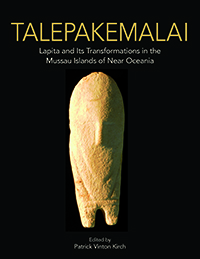As the Mussau Project progressed, we became increasingly engaged with issues of recovery and sample bias, especially after Butler (1988) and Nagaoka (1988) undertook systematic reviews of the Lapita faunal evidence (and of the different screening methods used to recover these) prior to the 1988 expedition. In 1985, we had little choice in recovery methodology, because the screening equipment was provided in advance by the organizers of the LHP, consisting of several sieves of 7 mm and 5 mm mesh, and a single sieve of 3 mm mesh. (The single 3 mm sieve, in poor condition, broke before the end of the field season.) We used the 5 mm mesh as much as possible, taking control samples with the 3 mm mesh to determine whether there was significant size bias in the assemblages retained by the 5 mm sieves. These tests indicated that the 5 mm mesh sieves were retaining most of the small faunal remains, as well as all potsherds and obsidian flakes. In 1986 we therefore equipped ourselves with a number of new 5 mm mesh sieves, as well as additional 3 mm sieves. (In North America, mesh sizes of 1/4” and 1/8” are routinely used, with most zooarchaeologists insisting that the 1/8” mesh is essential to avoid bias toward larger elements in faunal assemblages. The 5 mm sieves we used in Mussau are approximately 3/16”, while the 3 mm sieves are slightly finer than 1/8”.) In 1986, we also initiated the regular use of wet-sieving at the ECA site.
We remained concerned about possible bias in the dominant use of 5 mm mesh in our excavations, and at the urging of Virginia Butler conducted additional comparative sieve tests in 1988. Butler’s analysis of faunal suites recovered through the 5 and 3 mm meshes revealed no statistically significant differences between the fish remains recovered; I am thus satisfied that our screening methodology did not introduce significant bias into our assemblages. For persons working with the Mussau Project collections in the future, a database has been compiled indicating mesh size, and use of wet or dry sieving, for all units and levels of all sites. Thus sampling decisions regarding the Mussau collections can be made explicitly on the basis of recovery technique.
During the 1988 season, we devoted substantial effort to the systematic subsampling of every unit and level excavated at the ECA site with 1 liter bulk sediment samples, which were both floated and fine-sieved through 0.125 inch mesh to recover minute floral and faunal materials. This labor-intensive work yielded only marginal improvements in recovery rates, but again reassured us that our main sieving techniques were not biased.
Recovery is affected not only by excavation and screening methods, but by what is retained for analysis and further study. I determined early on that we would save for analysis 100% of all cultural materials retained in whatever sieve size was being utilized, for every excavated unit. This procedure reflects the view that excavation itself is already an act of sampling a universe (the site) of unknown—but almost certainly not random—distribution, and that a priori subsampling for faunal remains or other particular classes of material would only lessen our ability to understand site structure. We thus concur with Leach and Leach (1979) in their stated justification for collecting “massive residues” from excavations at Palliser Bay, New Zealand: “this approach was adopted in the belief that the analysis of cultural samples will only reveal information about the samples and not the population from which they derive. Cultural evidence is not distributed randomly; therefore, random sampling will not reveal cultural distributions” (1979:5). The wisdom of saving all cultural materials retained by the sieving operations was questioned by team members more than once as—already exhausted by a long day of digging in the tropical heat and humidity—we worked long into the night sorting, weighing, and counting staggering quantities of shell midden. Indeed, the processing of invertebrate midden materials consumed a large amount of time and labor; at the ECA site alone, we processed 1.43 metric tons of shell midden during the three seasons.
Although 100% of all excavated and sieved cultural materials were returned to the field laboratory, budget restrictions dictated that only some materials could be shipped to the United States for study and eventual curation. Thus, sampling decisions again had to be made to analyze under field conditions certain classes of cultural materials which would then be discarded. The following classes of materials were retained for permanent curation: (1) non-ceramic artifacts; (2) diagnostic sherds (include rims, carinations, bases, and any sherd bearing decoration), as well as large representative samples of plain body sherds; (3) vertebrate faunal remains; and (4) paleobotanical remains except for unmodified wood and coconut endocarp, which were sampled. Minimally, shell midden from each level was bulk weighed prior to discarding. For a large number of units, shell midden was first sorted to taxonomic class, each class being weighed individually. During the 1988 field season, this procedure was extended by also counting shell MNI for individual taxa, and by taking extensive series of individual shell measurements (see Chapters 8 and 9 in the book).
